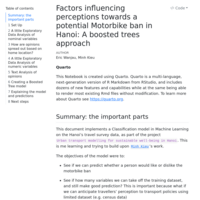Recently Published
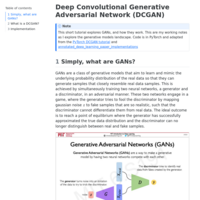
Deep Convolutional Generative Adversarial Networks (DCGANs)
A pit stop: DCGANs using PyTorch

Denoising Diffusion Probabilistic Models
Unravelling diffusion models using PyTorch
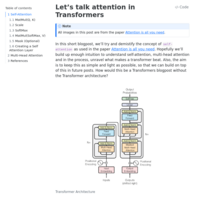
Let's talk attention in Transformers
A gentle explanation of self-attention as used in Transformers and how to implement it in PyTorch and Torch for R.

An image is worth 16x16 words
An overly annotated walkthrough and implementation of a vision transformer using PyTorch.
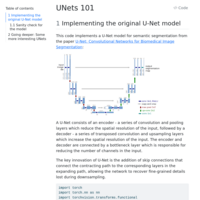
UNets
WIP: This short code walkthrough illustrates how one can implement various variations of UNets from scratch using Pytorch.
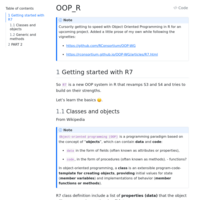
Exploring OOP in R
Getting started with R7

Creating directories and copying files in R
Demonstrates how to use R to create directories and copy/move files about.
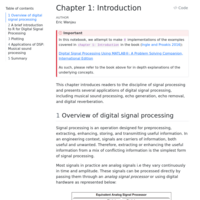
An introduction: Digital Signal Processing Using R
This chapter introduces readers to the discipline of signal processing and presents several applications of digital signal processing, including musical sound processing, echo generation, echo removal, and how to use R to perform such computations.
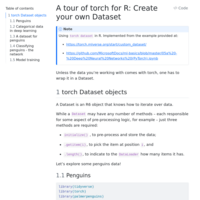
Torch Dataset
preprocess and load datasets with torch Dataset and Dataloader
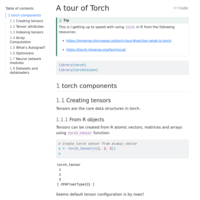
A glimpse of torch from r
Experimenting with Torch from R
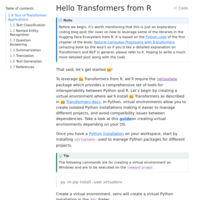
A Tour of Hugging face Transformers from R
Exploring how to leverage Transformers from R
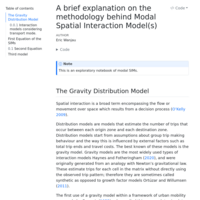
Spatial Interaction Models Considering Transport Mode
A document exploring modal spatial interaction modelss
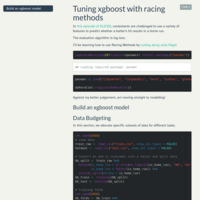
Tuning xgboost with racing methods
Getting started with racing methods for efficient model evaluation.
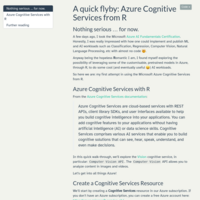
Azure Cognitive Services from R
This post shows how to leverage some of the customisable, pretrained models in Azure, through R, to do some cool (and eventually useful) AI workloads.

fidelius
password protected HTML files
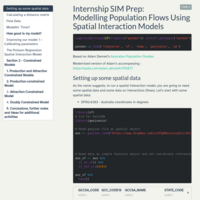
Spatial Interaction Models
Diving deeper into SIMs using R
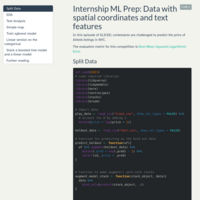
Internship ML Prep: Data with spatial coordinates and text features
Experimenting with boosted trees stacked with linear models.
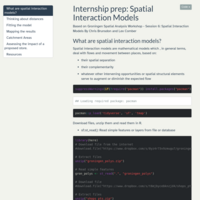
Spatial Interaction Models in R
Trying to get my footing in SIMs
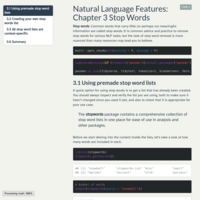
Natural Language Features: Chapter 3 Stop words (Studying out loud)
Finally trying to get my footing in Predictive modeling for text using the book: Supervised Machine Learning for Text Analysis in R

Train and Evaluate Clustering Models using Tidymodels and friends
This module is a build-up to a previous tutorial that focused on classification using Tidymodels. In this module, we hit the ground running with unsupervised learning. We use the `Tidymodels` framework in `R` and other amazing packages to train and evaluate K-Means clustering as well as Hierarchical clustering.

Train and Evaluate Classification Models using Tidymodels
This module is a build-up to a previous tutorial that focused on regression using Tidymodels. In this module, we go a step further and start building classification models. We use the `Tidymodels` framework in `R` to train and evaluate classification models using different algorithms, do some data preprocessing, tune some hyperparameters and make better predictions.
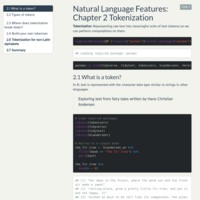
Natural Language Features: Chapter 2 Tokenization (Studying out loud)
Finally trying to get my footing in Predictive modeling for text using the book: Supervised Machine Learning for Text Analysis in R
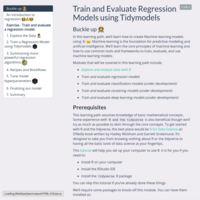
Train and Evaluate Regression Models using Tidymodels
This module is a build-up to a previous tutorial that focused on exploring and analyzing data using R. In this module, we go a step further and start building regression models. We use the `Tidymodels` framework in `R` to train and evaluate regression models using different algorithms, do some data preprocessing, tune some hyperparameters and make better predictions.

Exploring and analyzing data with R
Unsurprisingly, the role of a data scientist primarily involves exploring and analyzing data. The results of this analysis might form the basis of a report or a machine learning model; but it all begins with data. In this module, we learn how to use R to explore, visualize, and manipulate data. Data exploration is at the core of data science, and is a key element in data analysis and machine learning.
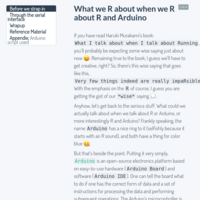
What we R about when we R about R and Arduino
This post is a gentle introduction to the use of R and Arduino to control peripherals such as LEDs and servo motors. It demonstrates how a communication link can be set up between the two which opens up the possibility of controlling hardware right from R!
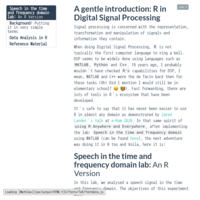
A gentle introduction: R in Digital Signal Processing
In this post, we analyze a speech signal in the time and frequency domain whilst covering fundamental concepts in DSP using R.
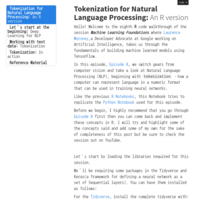
Tokenization for Natural Language Processing: An R version
This notebook is an R version of the Python notebook used by Laurence Moroney, a Developer Advocate at Google working on Artificial Intelligence, for the eighth YouTube episode of Machine Learning Foundations: Ep 8- Tokenization for Natural Language Processing.
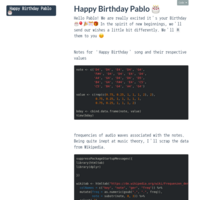
Happy BiRthday Pablo Veramendi
This is just the R community expressing our best wishes to Pablo.
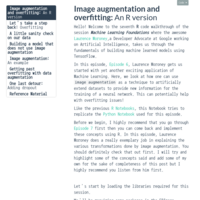
Image augmentation and overfitting: An R version
This notebook is an R version of the Python notebook used by Laurence Moroney, a Developer Advocate at Google working on Artificial Intelligence, for the seventh YouTube episode of Machine Learning Foundations: Ep 7- Image augmentation and overfitting.

Implementing convolutions in R
This Notebook tries to explain the concepts of Convolutional Neural Networks and how they extract features from an image before feeding the output to the Densely Connected layers. Co-authored with Ian Muchiri.

Convolutional cats and dogs: An R version
This notebook is an R version of the Python notebook used by Laurence Moroney, a Developer Advocate at Google working on Artificial Intelligence, for the sixth YouTube session: Machine Learning Foundations: Ep 6- Convolutional cats and dogs
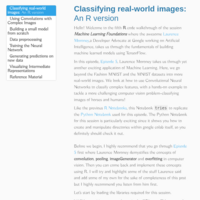
Classifying real-world images: An R version
This notebook is an R version of the Python notebook used by Laurence Moroney, a Developer Advocate at Google working on Artificial Intelligence, for the fifth YouTube session: Machine Learning Foundations: Ep 5- Classifying real-world images.
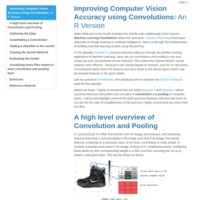
Improving Computer Vision Accuracy using Convolutions: An R Version
This notebook is an R version of the Python notebook used by Laurence Moroney, a Developer Advocate at Google working on Artificial Intelligence, for the fourth YouTube session: Machine Learning Foundations: Ep #4 - Coding with Convolutional Neural Networks
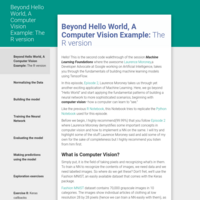
Beyond Hello World, A Computer Vision Example: The R version
This notebook is an R version of the Python notebook used by Laurence Moroney, a Developer Advocate at Google working on Artificial Intelligence, for the second YouTube session: Machine Learning Foundations: Ep 2- First steps in computer vision.

The Hello World of Deep Learning with Neural Networks:The R version
This notebook is an R version of the Python notebook used by Laurence Moroney, a Developer Advocate at Google working on Artificial Intelligence, for the first YouTube session: Machine Learning Foundations: Ep #1 - What is ML?
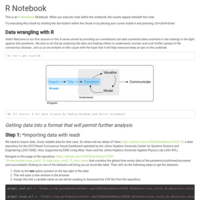
A gentle introduction to Data Wrangling with R
This session aims at demystifying the data wrangling process from importing data to some basic transformation using packages in the Tidyverse.
